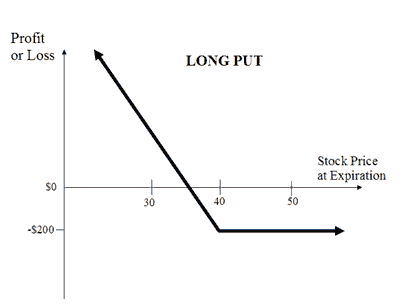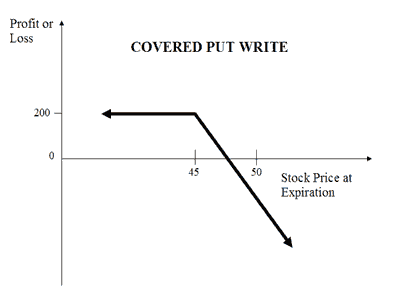 Zerodha (Trading & Demat Account)
Zerodha (Trading & Demat Account)
FREE Equity Delivery and MF
Flat ₹20/trade Intra-day/F&O
 Zerodha (Trading & Demat Account)
Zerodha (Trading & Demat Account)
FREE Equity Delivery and MF
Flat ₹20/trade Intra-day/F&O

|
|
Compare Long Put and Covered Put (Married Put) options trading strategies. Find similarities and differences between Long Put and Covered Put (Married Put) strategies. Find the best options trading strategy for your trading needs.
| Long Put | Covered Put (Married Put) | |
|---|---|---|
 |
 |
|
| About Strategy | A Long Put strategy is a basic strategy with the Bearish market view. Long Put is the opposite of Long Call. Here you are trying to take a position to benefit from the fall in the price of the underlying asset. The risk is limited to premium while rewards are unlimited. Long put strategy is similar to short selling a stock. This strategy has many advantages over short selling. This includes the maximum risk is the premium paid and lower investment. The challenge with this strategy is that options have an expiry, unlike stocks which you can hold as long as you want. Let's assume you are bearish on NIFTY and expects its price to fall. You can deploy a Long Put strategy by buying an ATM PUT Option of NIFTY. If the price of NIFTY share... Read More | The Covered Put is a neutral to bearish market view and expects the price of the underlying to remain range bound or go down. In this strategy, while shorting shares (or futures), you also sell a Put Option (ATM or slight OTM) to cover for any unexpected rise in the price of the shares. This strategy is also known as Married Put strategy or writing covered put strategy. The risk is unlimited while the reward is limited in this strategy. How to use a Protective Call trading strategy? The usual Covered Put looks like as below for State Bank of India (SBI) Shares which are currently traded at Rs 275 (SBI Spot Price): Covered Put Orders - SBI Stock OrdersSBI Strike Price Sell Underlying SharesSell 100 SBI Shares ... Read More |
| Market View | Bearish | Bearish |
| Strategy Level | Beginners | Advance |
| Options Type | Put | Put + Underlying |
| Number of Positions | 1 | 2 |
| Risk Profile | Limited | Unlimited |
| Reward Profile | Unlimited | Limited |
| Breakeven Point | Strike Price of Long Put - Premium Paid | Futures Price + Premium Received |
| Long Put | Covered Put (Married Put) | |
|---|---|---|
| When to use? | A long put option strategy works well when you're expecting the underlying asset to sharply decline or be volatile in near future. |
The Covered Put works well when the market is moderately Bearish |
| Market View | Bearish When you are expecting a drop in the price of the underlying and rise in the volatility. |
Bearish When you are expecting a moderate drop in the price and volatility of the underlying. |
| Action |
Let's assume you're Bearish on Nifty currently trading at 10,400. You expect it to fall to 10,000 level. You buy a Put option with a strike price 10,000. If the Nifty goes below 10,000, you will make a profit on exercising the option. In case the Nifty rises contrary to expectation, you will incur a maximum loss of the premium. |
Sell Underlying Sell OTM Put Option Suppose SBI is trading at 300. You believe that the price will remain range bound or mildly drop. The covered put allows you to benefit from this market view. In this strategy, you sell the underlying and also sell a Put Option of the underlying and receive the premium. You will benefit from drop in prices of SBI, the Put Option will minimize your risks. If there is no change in price then you keep the premium received as profit. |
| Breakeven Point | Strike Price of Long Put - Premium Paid The breakeven is achieved when the strike price of the Put Option is equal to the premium paid. |
Futures Price + Premium Received The break-even point is achieved when the price of the underlying is equal to the total of the sale price of underlying and premium received. |
| Long Put | Covered Put (Married Put) | |
|---|---|---|
| Risks | Limited The risk for this strategy is limited to the premium paid for the Put Option. Maximum loss will happen when price of underlying is greater than strike price of the Put option. |
Unlimited The Maximum Loss is Unlimited as the price of the underlying can theoretically go up to any extent. Loss = Price of Underlying - Sale Price of Underlying - Premium Received |
| Rewards | Unlimited This strategy has the potential to earn unlimited profit. The profit will depend on how low the price of the underlying drops. |
Limited The maximum profit is limited to the premiums received. The profit happens when the price of the underlying moves above strike price of Short Put. |
| Maximum Profit Scenario | Underlying goes down and Option exercised
|
Underlying goes down and Options exercised |
| Maximum Loss Scenario | Underlying goes up and Option not exercised
|
Underlying goes up and Options exercised |
| Long Put | Covered Put (Married Put) | |
|---|---|---|
| Advantages | Unlimited profit potential with risk only limited to loss of premium. |
Its an income generation strategy in a neutral or Bearish market. Also allows you to benefit from fall in prices, range bound movements or mild increase. |
| Disadvantage | You may incur 100% loss in premium if the underlying price rises. |
The risks can be huge if the prices increases steeply. |
| Simillar Strategies | Protective Call, Short Put, Long Straddle | Bear Put Spread, Bear Call Spread |

Add a public comment...

FREE Intraday Trading (Eq, F&O)
Flat ₹20 Per Trade in F&O
|
|